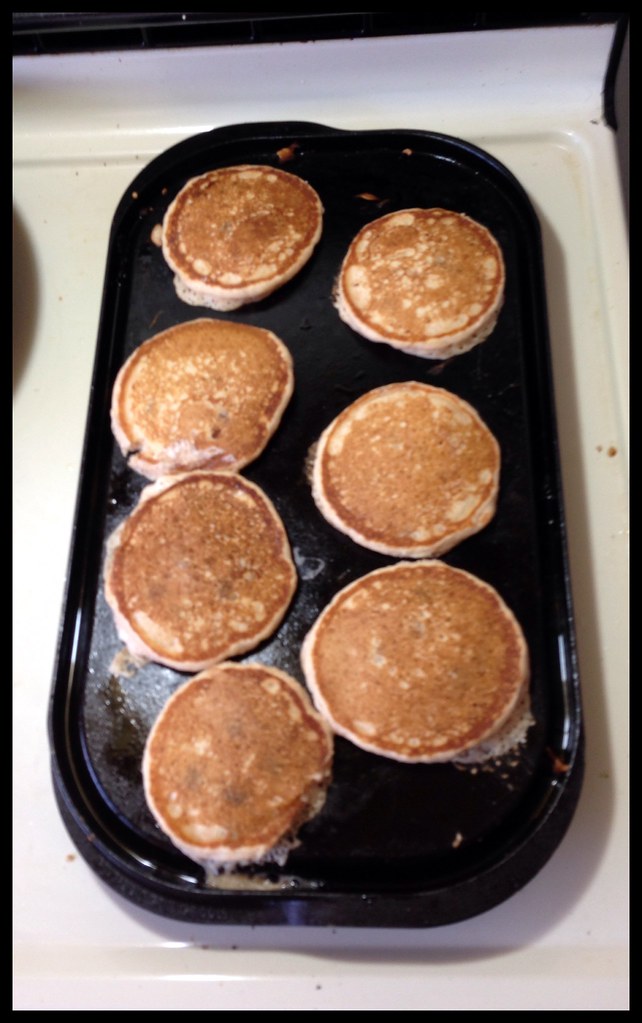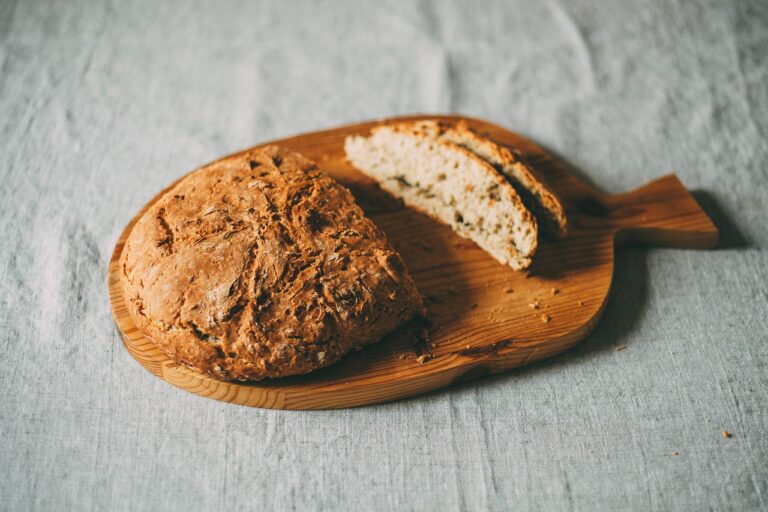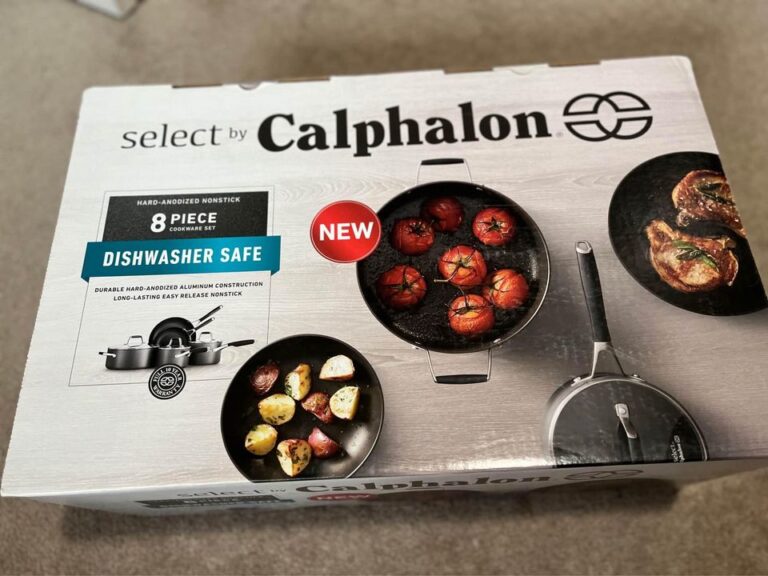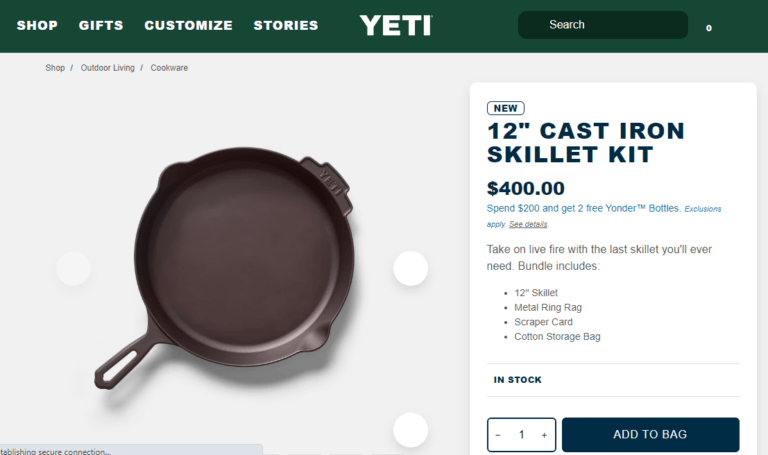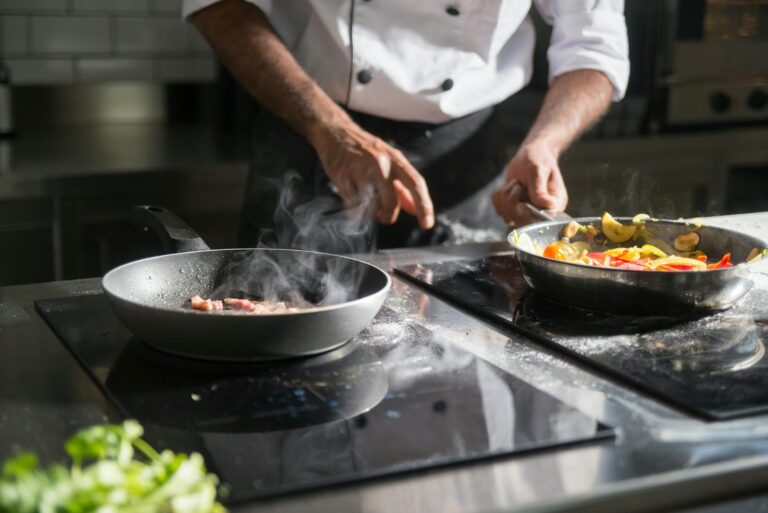Do you love fluffy, perfectly cooked pancakes? Achieving pancake perfection starts with getting the griddle temperature just right.
In this article, we’ll explore the importance of temperature control and help you find the sweet spot for your pancakes. Discover how temperature affects texture, learn the science behind cooking pancakes, and avoid common temperature pitfalls.
With our tips, you’ll be flipping flawless pancakes in no time.
So, what temperature should your griddle be for pancakes? Let’s find out!
Key Takeaways
- Controlling griddle temperature is crucial for achieving fluffy and golden pancakes.
- Aim for a griddle temperature of around 375°F (190°C) for fluffy pancakes.
- Too hot griddle can lead to burnt outside and undercooked inside pancakes.
- Too cold griddle can result in dense and pale pancakes.
The Importance of Temperature Control for Pancake Perfection
To achieve pancake perfection, you need to carefully control the temperature of your griddle. The temperature of the griddle plays a crucial role in determining the outcome of your pancakes. By adjusting techniques and achieving consistency in temperature, you can ensure that your pancakes turn out fluffy and golden every time.
When the griddle is too hot, the pancakes can burn on the outside and remain undercooked on the inside. On the other hand, if the griddle isn’t hot enough, the pancakes may turn out dense and pale. Finding the perfect temperature is essential for achieving that ideal balance of crispy edges and a soft, fluffy center.
Finding the Sweet Spot: Ideal Griddle Temperature for Fluffy Pancakes
You’ll want to aim for that perfect level of heat to achieve fluffy pancakes. When it comes to pancake browning, the temperature of your griddle surface plays a crucial role.
Too hot, and your pancakes will burn before they’ve a chance to cook through. Too cold, and they’ll end up dense and undercooked.
The ideal griddle temperature for fluffy pancakes is around 375°F (190°C). At this temperature, the pancake batter will cook evenly, resulting in a beautiful golden brown color and a light, airy texture.
To ensure an even heat distribution, preheat your griddle for a few minutes before pouring the batter. Remember, finding the sweet spot in griddle temperature is the key to pancake perfection.
Too Hot or Too Cold? the Impact of Temperature on Pancake Texture
Are your pancakes turning out too tough or too fluffy?
The temperature of your griddle might be to blame.
When the griddle is too hot, the pancakes can cook too quickly and become dry and rubbery.
On the other hand, if the griddle is too cold, the pancakes may not cook evenly and end up dense and undercooked in the middle.
Optimal Griddle Temperature
The best temperature for your griddle is 375 degrees Fahrenheit for perfect pancakes. This optimal cooking temperature ensures that your pancakes cook evenly and develop a golden-brown color without burning.
To maintain your griddle’s performance and extend its lifespan, it’s important to practice regular griddle maintenance. Here are three important tips to keep in mind:
- Clean your griddle thoroughly after each use to remove any leftover batter or residue. This prevents buildup and ensures a clean cooking surface.
- Season your griddle regularly with oil to create a non-stick surface. This not only prevents sticking but also adds flavor to your pancakes.
- Store your griddle in a cool, dry place to prevent rust and damage. Avoid stacking heavy objects on top of it to maintain its shape and functionality.
Following these maintenance practices will ensure that your griddle remains in optimal condition for delicious pancake cooking every time.
Pancake Texture Variation
To achieve variation in pancake texture, adjust the amount of liquid you add to the batter. The amount of liquid you use will directly affect the pancake fluffiness and cooking time.
If you want fluffier pancakes, add a little more liquid to the batter. This will create a lighter and airier texture.
On the other hand, if you prefer denser pancakes, reduce the amount of liquid. This will result in a thicker batter and a more compact pancake.
Additionally, the cooking time will also be affected by the amount of liquid in the batter. More liquid will require a slightly longer cooking time to ensure the pancakes are cooked through.
Understanding the Science Behind Cooking Pancakes at the Right Temperature
You should aim for the griddle to reach a temperature of around 375°F for perfectly cooked pancakes. This temperature is crucial because it allows the pancake batter to cook evenly and develop a golden brown color.
When the griddle is too hot, the pancakes can burn on the outside while remaining undercooked on the inside. On the other hand, if the griddle is too cool, the pancakes will take longer to cook and may turn out pale and doughy.
Understanding the impact of heat on pancake batter is essential for achieving the desired texture and flavor. Here are three pancake cooking techniques that rely on the right griddle temperature:
- Preheating the griddle: This ensures that the surface is evenly heated, preventing uneven cooking.
- Using a non-stick griddle: A non-stick surface helps the pancakes cook evenly and prevents sticking, resulting in a smooth texture.
- Adjusting the temperature as needed: If the pancakes are browning too quickly, reduce the heat slightly. If they’re taking too long to cook, increase the heat slightly.
Factors to Consider When Determining the Ideal Griddle Temperature for Pancakes
For perfect pancakes, it’s important to consider factors like even cooking and preventing sticking. When finding the right pan, opt for a non-stick griddle or skillet to ensure your pancakes slide off effortlessly. A non-stick surface will also help in achieving an evenly cooked pancake.
Additionally, it’s crucial to optimize the cooking time to ensure that your pancakes are golden brown and cooked through. Start by preheating your griddle or skillet over medium heat, allowing it to reach a temperature of around 375°F (190°C). This temperature will give you the perfect balance between a crispy exterior and a fluffy interior.
Remember to adjust the heat as needed throughout the cooking process to maintain this temperature and avoid burning your pancakes.
Adjusting the Heat: Tips for Achieving Consistent Pancake Results
Achieving consistent pancake results requires careful heat adjustment throughout the cooking process. To ensure your pancakes turn out perfectly every time, follow these tips:
- Start with a preheated griddle: Allow your griddle to heat up properly before pouring the batter. This will help create a golden, evenly cooked pancake.
- Monitor the heat: Keep an eye on the temperature throughout the cooking process. Adjust the heat as needed to prevent burning or undercooking.
- Test with a sacrificial pancake: Before making the entire batch, cook a small test pancake to gauge the heat level. This will help you make adjustments before making the rest of the pancakes.
Testing and Tweaking: Finding Your Preferred Griddle Temperature for Pancakes
To find your preferred griddle heat for perfect pancakes, start by testing and tweaking until you get the desired results.
Finding the optimal temperature for your griddle can make a big difference in the outcome of your pancakes. Begin by preheating your griddle over medium heat and letting it heat up for a few minutes.
Then, pour a small amount of batter onto the griddle and observe how it cooks. If the pancake is browning too quickly or not cooking evenly, adjust the heat accordingly. Troubleshooting techniques such as lowering the heat or raising it slightly can help you achieve the perfect pancake.
Keep experimenting until you find the ideal temperature that produces golden, fluffy pancakes every time. Practice makes perfect, so don’t be afraid to make adjustments along the way.
Beyond the Batter: How Griddle Temperature Affects Pancake Toppings
Now that you’ve found your ideal griddle temperature for perfect pancakes, let’s explore how the temperature of the griddle can also affect your pancake toppings.
Beyond just the batter, the heat of the griddle can impact the melting points of your toppings, allowing some to soften and spread, while others remain intact.
Additionally, the temperature can affect the flavor infusion potential, as higher heat can help ingredients like fruit release their natural sweetness.
Lastly, the griddle temperature can also influence the texture and appearance of your toppings, creating a crispy or gooey finish.
Topping Melting Points
Make sure your griddle is hot enough for the toppings to melt properly. This is crucial for flavor enhancement and texture control. When your griddle is at the right temperature, it allows the toppings to melt and blend with the pancakes, creating a burst of flavor with every bite.
The heat also helps to create a beautiful golden crust on the toppings, adding a delightful crunch to the overall texture. Additionally, the hot griddle ensures that the toppings are evenly distributed, preventing any clumps or uneven distribution.
Flavor Infusion Potential
When your toppings are heated properly, they infuse the pancakes with a burst of flavor that will leave you craving more. Flavor infusion techniques can take your pancakes to the next level. By adding ingredients like chocolate chips, blueberries, or even bacon, you can create a pancake experience that’s truly unforgettable.
The temperature at which you cook your pancakes also plays a crucial role in flavor infusion. When the griddle is too hot, the batter cooks too quickly, leaving little time for the flavors to meld together. On the other hand, if the griddle is too cool, the toppings may not fully melt and integrate with the pancake batter.
Finding the perfect balance in temperature ensures that your toppings are heated just right, leading to a delicious flavor explosion in every bite.
Texture and Appearance
You’ll love the fluffy texture and golden appearance of your perfectly cooked pancakes. The secret to achieving this isn’t only in the ingredients but also in the way you cook them. Here are a few tips to help you create pancakes that aren’t only delicious but also visually appealing:
- Proper temperature: Preheat your griddle to medium-high heat to ensure even cooking and a beautiful golden brown color.
- Flavor development: As your pancakes cook, the heat causes a chemical reaction known as the Maillard reaction. This reaction creates delicious flavors and aromas, adding depth to your pancakes.
- Browning reaction: The browning that occurs on the surface of your pancakes isn’t only pleasing to the eye but also contributes to the overall flavor profile. The sugars in the batter caramelize, creating a slightly sweet and nutty taste.
Avoiding Common Pitfalls: Temperature Mistakes to Watch Out for When Making Pancakes
To avoid common pitfalls when making pancakes, make sure your griddle’s temperature is set correctly. One of the biggest pancake cooking mistakes is having the griddle too hot or too cold. If your griddle is too hot, the outside of the pancake will burn before the inside has a chance to cook properly. On the other hand, if the griddle is too cold, the pancake will take longer to cook and may end up looking pale and undercooked.
Achieving pancake perfection requires finding the right balance. A medium-low heat is usually ideal for cooking pancakes. You want the pancakes to cook evenly, with a golden brown color and a fluffy texture. So, before you start pouring the batter, make sure your griddle is at the perfect temperature for pancake success.
Experimenting With Temperature: Exploring Different Cooking Methods for Pancakes
If you want to explore different cooking methods for pancakes, it’s important to experiment with various heat levels. Temperature control plays a crucial role in achieving the perfect pancake.
Here are a few tips to help you in your culinary adventures:
- Start low, then go high: Begin by preheating your griddle or pan on low to medium-low heat. This ensures that your pancakes cook evenly without burning. Once the batter hits the hot surface, you can gradually increase the heat for a golden brown finish.
- Adjust for texture: If you prefer fluffy pancakes, keep the temperature on the lower side. Lower heat allows the batter to rise and creates lighter, airy pancakes. For a crispier texture, turn up the heat slightly to achieve a nice outer crust.
- Consider the size: The size of your pancakes also affects cooking temperature. Smaller pancakes may require higher heat for a shorter cooking time, while larger ones need lower heat to cook through without burning.
The Perfect Pancake Flip: Mastering the Art of Cooking Pancakes at the Right Temperature
Achieving the perfect pancake flip requires mastering the art of cooking at just the right heat level. To ensure that your pancakes turn out golden brown and delicious, it’s important to understand the importance of temperature.
Start by preheating your griddle or frying pan over medium heat. This will allow the pancakes to cook evenly without burning. As you pour the batter onto the hot surface, give it a moment to spread out before flipping.
When it’s time to flip, use a spatula to gently lift the edges and quickly flip the pancake in one smooth motion. Practice makes perfect when it comes to mastering flipping techniques.
With a little patience and practice, you’ll soon achieve the perfect golden brown color on your pancakes.
Conclusion
In conclusion, achieving the perfect pancake requires careful temperature control. Finding the sweet spot on the griddle is essential for achieving fluffy pancakes with a golden brown exterior. Too hot or too cold of a griddle can greatly impact the texture and overall quality of the pancakes.
By understanding the science behind cooking pancakes at the right temperature and avoiding common temperature mistakes, you can master the art of creating delicious pancakes every time.
